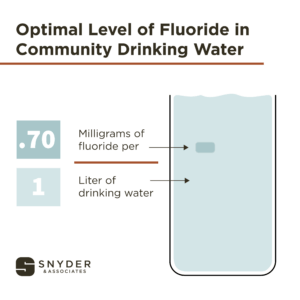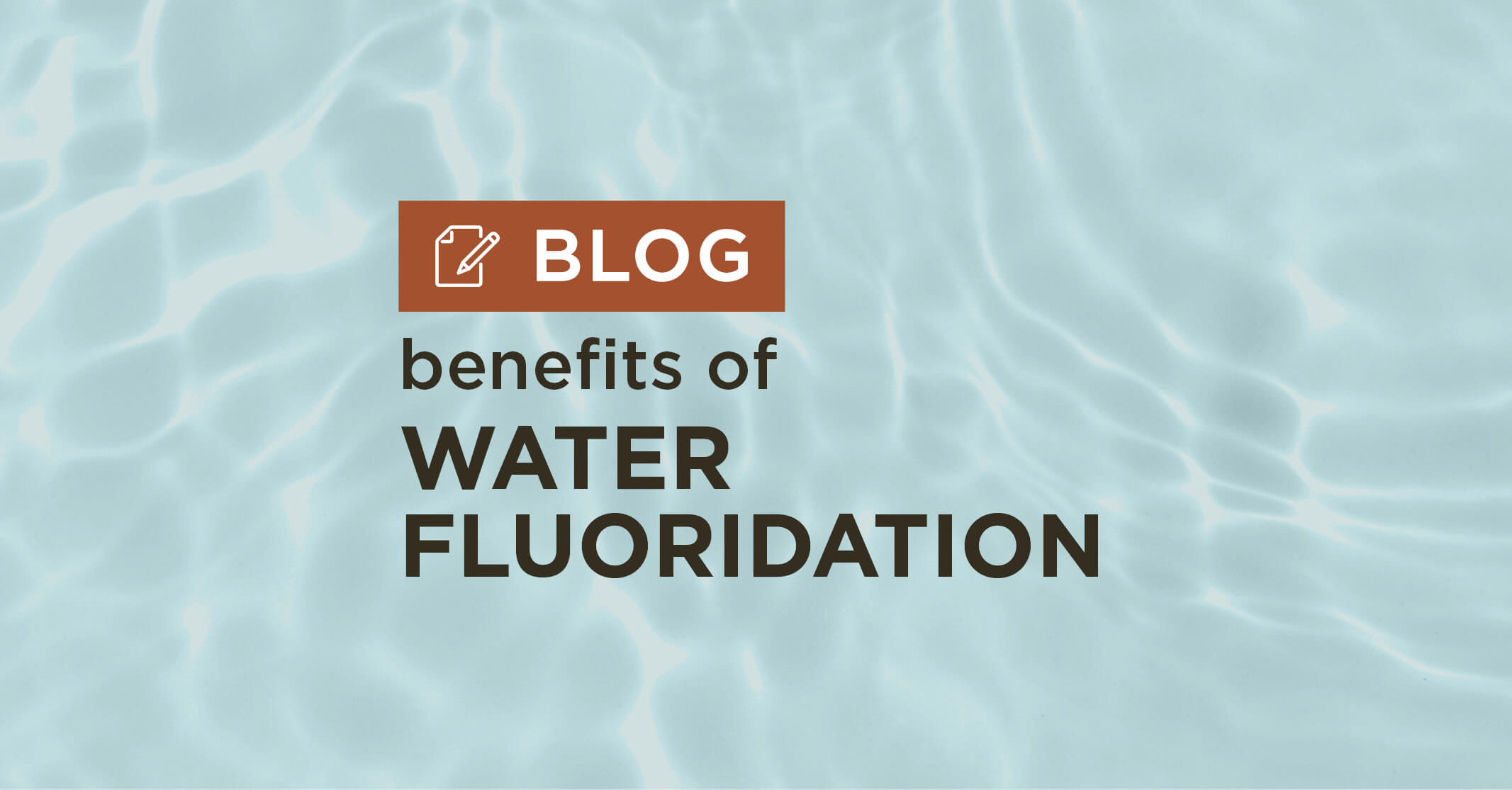Fluoridation to Improve Dental Health
Most of the water treatment processes utilized by communities are designed to remove harmful chemicals and other contaminants from a raw water source. Although these processes are equipped to remove naturally occurring elements, as well, many communities opt to leave fluoride in their water supply, with many adding or increasing quantities to help improve dental health.
History of Fluoridation in Drinking Water
For decades, scientists have been actively working on maintaining beneficial levels of fluoride within community water supplies — a process that has been endorsed by the American Dental Association (ADA), the American Medical Association (AMA), the Centers for Disease Control and Prevention (CDC), the U.S. Public Health Service (USPHS), and the World Health Organization (WHO).

Research has consistently shown that if the optimal level of 0.70mg/L is adhered to, fluoride in community water is safe and effective in preventing tooth decay.
Investigation into the fluoridation process began in the 1940s when residents in several Colorado communities were plagued by brown-stained teeth. It was discovered that high amounts of fluoride in drinking water supplies could be detrimental to tooth enamel. This led a dentist with the U.S. Public Health Service to launch a study to determine how high the level of fluoride in drinking water could be before causing tooth damage.
An unexpected result of the study was the discovery that lower levels of fluoride had a positive effect on maintaining dental health. Since that period, research has consistently shown that if the optimal level of 0.70mg/L is adhered to, fluoride in community water is safe and effective in preventing tooth decay and promoting strengthened enamel in both children and adults.
According to the Iowa Department of Public Health, 89% of Iowans currently have access to fluoridated drinking water, most through their community’s water treatment facility. The water experts at Snyder & Associates have assisted in designing and maintaining many of these systems and can provide several options for adding, reducing, or maintaining fluoridation levels in your system.
Finetuning Fluoride Levels in the Treatment Process
As fluoride naturally exists in many water systems across the Midwest, maintaining the proper levels for drinking water can be obtained through three different methods:
- Combining different source waters to optimize fluoride levels
- Removing excessive amounts of fluoride, otherwise known as defluoridation
- Adding fluoride to drinking water systems that contain low levels
Determining which process will work best for your community’s water system depends on the naturally occurring fluoride levels in your water source. If the source water naturally falls within the acceptable fluoride range, then no additional treatment is required beyond regular testing.
Fluoride Levels Consistently Register Above the Acceptable Range
If fluoride levels consistently register above the acceptable range, defluoridation may be necessary. The different methods used for the removal of excess fluoride from water can be broadly classified into four basic types: precipitation technique, adsorption technique, ion-exchange technique, and/or reverse osmosis. Determining which process will work cohesively with your current water treatment system will vary according to site-specific contaminants, mineral content, geography, and economic conditions. Our team can evaluate every component of a water system to recommend the most cost-effective and efficient method to meet your fluoridation needs.
Fluoride Levels Consistently Register Below the Acceptable Range
If a water system registers below the acceptable range or lacks fluoride completely, it can be added to bring levels into the acceptable range. This is typically done after the water has flowed through a municipality’s designated treatment process and just before distribution. The three key compounds used for the fluoridation of drinking water are hydrofluosilicic acid, sodium silicofluoride, and sodium fluoride.
As the most used fluoridating compound, hydrofluosilicic acid is a liquid that can be diluted or fed directly into the raw water. Hydrofluosilicic acid, also known as fluorosilicic acid, hexafluorosilicic acid, and silicofluoric acid, is a common choice in many water treatment plants due to its low cost and ease of addition into a system. However, since it is a liquid and heavier than the other fluoridation compounds, shipping costs can be higher than other compounds.
The other two frequently used fluoridation compounds are dry powders. Sodium silicofluoride, also known as sodium fluorosilicate, is challenging to use due to its limited solubility. The other powder option is sodium fluoride. This compound is typically easier to feed than the previously mentioned compounds due to its ability to easily dissolve in water. Again, our team can make the proper compound recommendation based on the system in place in your community
Financial Assistance for Fluoridation Upgrades
As with all water treatment methods, there are additional costs associated with achieving the proper fluoridation levels. Due to the acidic nature of the necessary compounds in their raw state, a designated storage space is required to provide proper ventilation and separation from other additives used in the treatment process. Additionally, the lifespan of the feed equipment is often shorter than others.
However, it’s been noted that in terms of economic impacts, community water fluoridation offers a high return on investment. It reduces the lost productivity and other costs associated with time spent away from work or school to attend dental appointments beyond regular checkups. And for communities in Iowa, the Delta Dental of Iowa Foundation has made funding opportunities available for updating and installing fluoride equipment.
Aiding in Public Health Achievements
Named one of the greatest public health achievements of the 20th century by the CDC, drinking water fluoridation provides Americans with improved tooth enamel, cavity protection, and other dental health benefits simply by drinking water. The team at Snyder & Associates is proud to do our part in creating and maintaining the systems that help make this achievement possible. If your community is looking to add fluoridation to the water treatment process, or simply needs a dependable group to discuss your options, our experts stand ready to help.
